
what you'll learn...
Conversion to 1st Quadrant
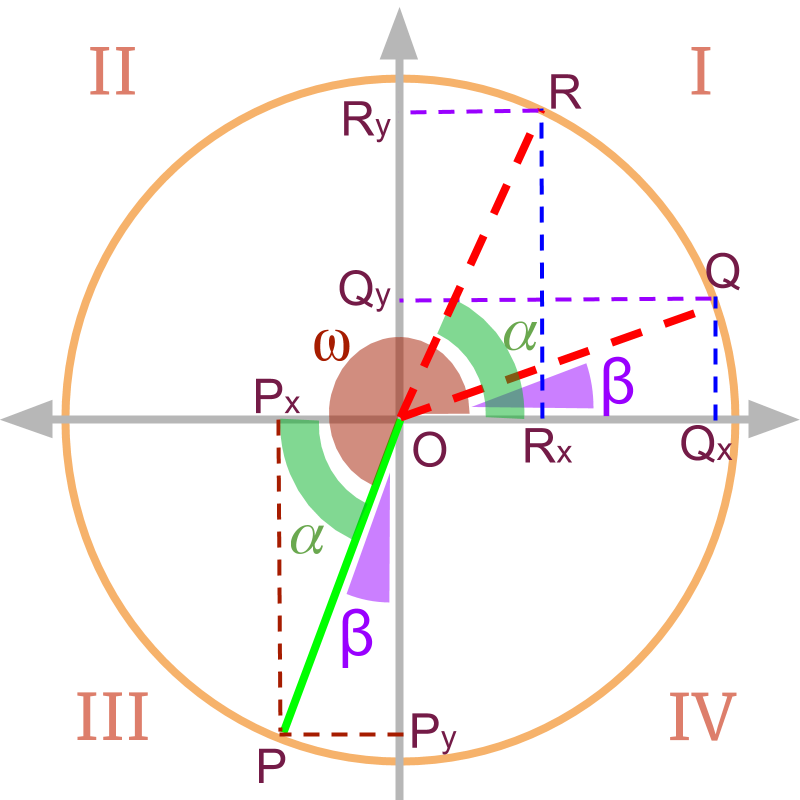 » Conversion of angle to 1st quadrant
» Conversion of angle to 1st quadrant
→ acute angle made by point with x axis
→ acute angle made by point with y axis
» Point makes angle in 1st quadrant.
→
→
→ x and y coordinates position is retained
→
→
» Point makes angle in 1st quadrant.
→
→
→ x and y coordinates position is interchanged
→
→
Quickly follow the x and y projection in the quadrant to figure out the conversion. No need to memorize.
understanding the problem
We studied about angles that are in 2nd, 3rd, or 4th quadrants. Before that, We have studied about trigonometric ratios for standard angles degree, which are all in 1st quadrant.
Are there more standard angles in the 2nd, 3rd, or 4th quadrants? Should one learn the values of such angles?
Or can the trigonometric ratios of angles from 2nd, 3rd, and 4th quadrants be equivalently represented with trigonometric ratios of angles from 1st quadrant only. If such transformation is possible, then it simplifies.
Note: For any angle in 2nd, 3rd, and 4th quadrants, trigonometric ratios can be equivalently given as a trigonometric ratios in 1st quadrants. The objective of this page is to learn that.
two contexts
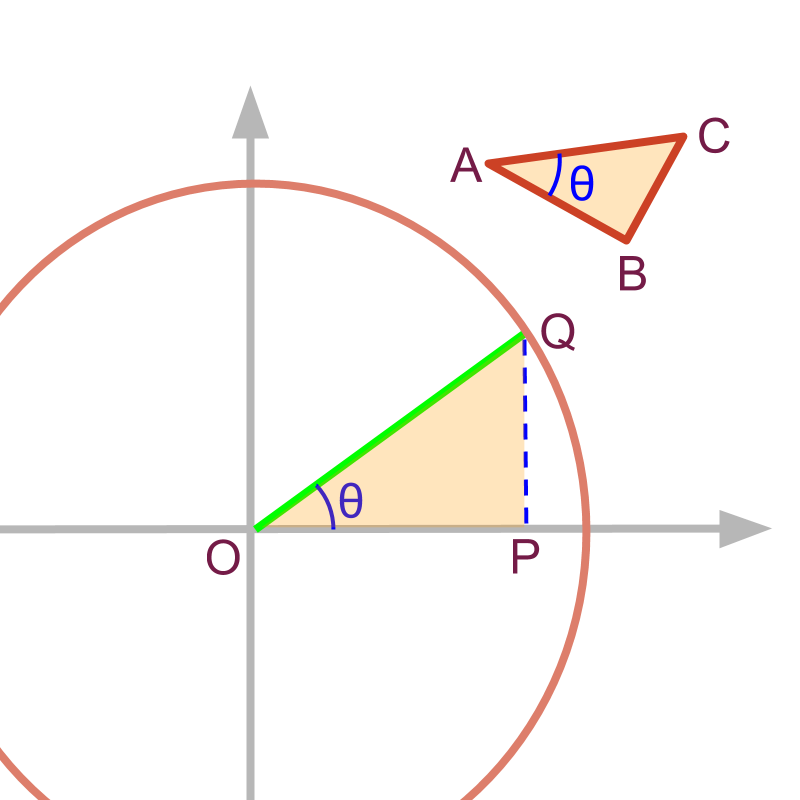
Trigonometric ratios can be defined in two contexts
• For a right-angled-triangle with angle , the hypotenuse and sides of the triangle define the ratios
• In a unit circle, the line at the given angle forms a similar triangle and ratios can be equivalently given in that triangle.
two forms in unit-circle
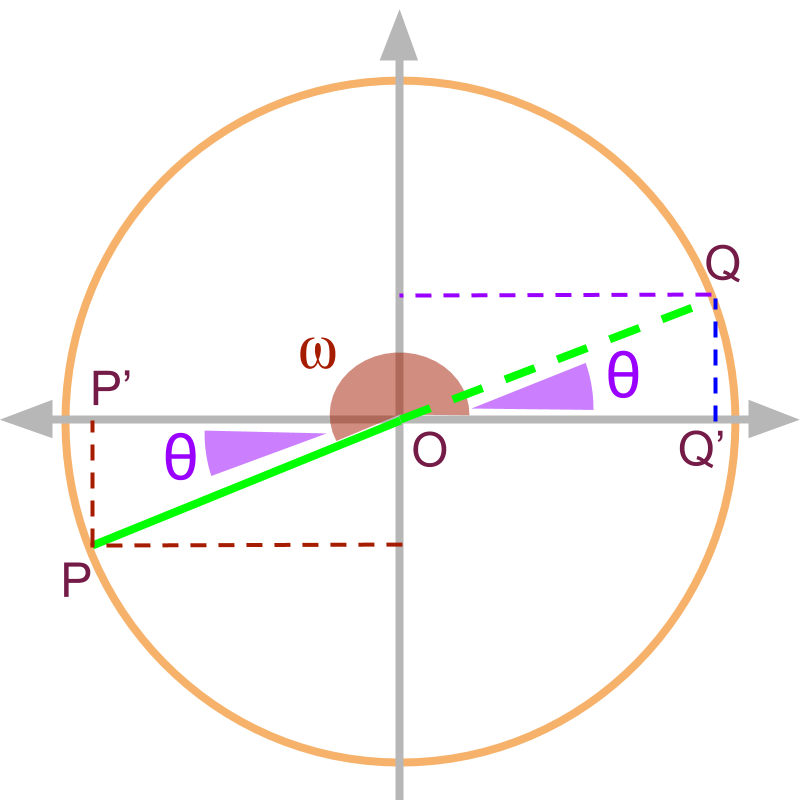
For a given , the trigonometric ratios can be defined in two forms the projections on x and y axis for the given an equivalent ratio for the in the first quadrant. Note, is a similar triangle to and so the trigonometric ratios of can be specified in terms of .
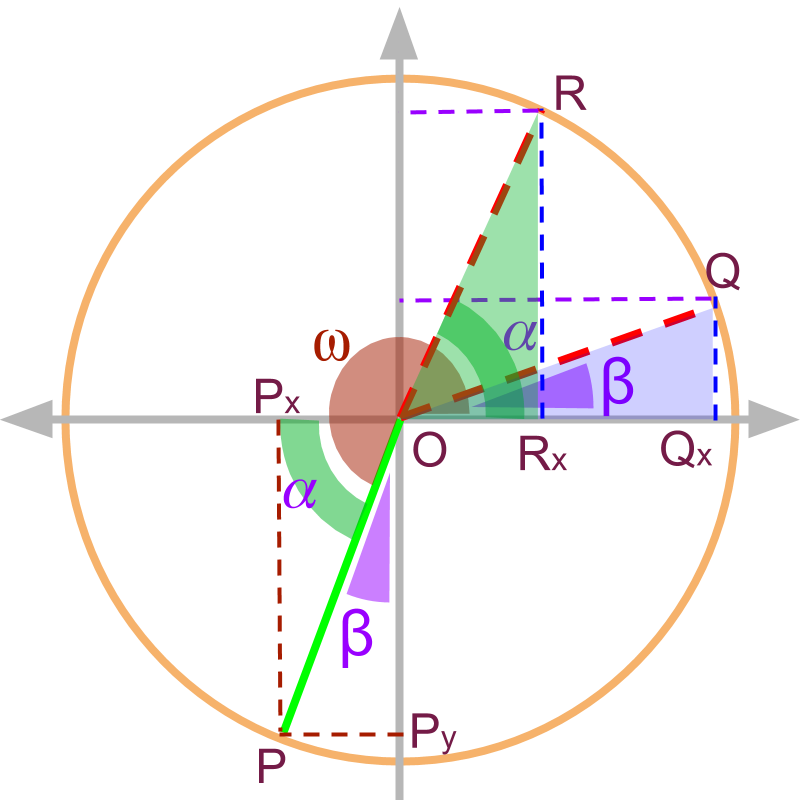
Note the following
for the point on unit circle is and its x and y projections are and .
The angle makes with x axis is and with y axis is .
Two triangles are constructed in the 1st quadrant.
For the angle the similar triangle in 1st quadrant is .
For the angle the similar triangle in 1st quadrant is
Note that and
The trigonometric ratios of can be found from either one of the following.
as the x and y projections match with that of .
can be used knowing that the x and y projections are interchanged in the 1st quadrant.
For any angle there are two possible similar triangles in 1st quadrant.
First is based on angle made with x-axis, given as , in which case the x and y projections are retained in magnitude in the 1st quadrant. So the trigonometric ratios are retained in the 1st quadrant.
Second is based on angle made with y-axis given as , in which case the x and y projections are interchanged in magnitude in the 1st quadrant. So the trigonometric ratios are given for complementary angles.
It is also noted that and are complementary angles.
first form: angle with x-axis
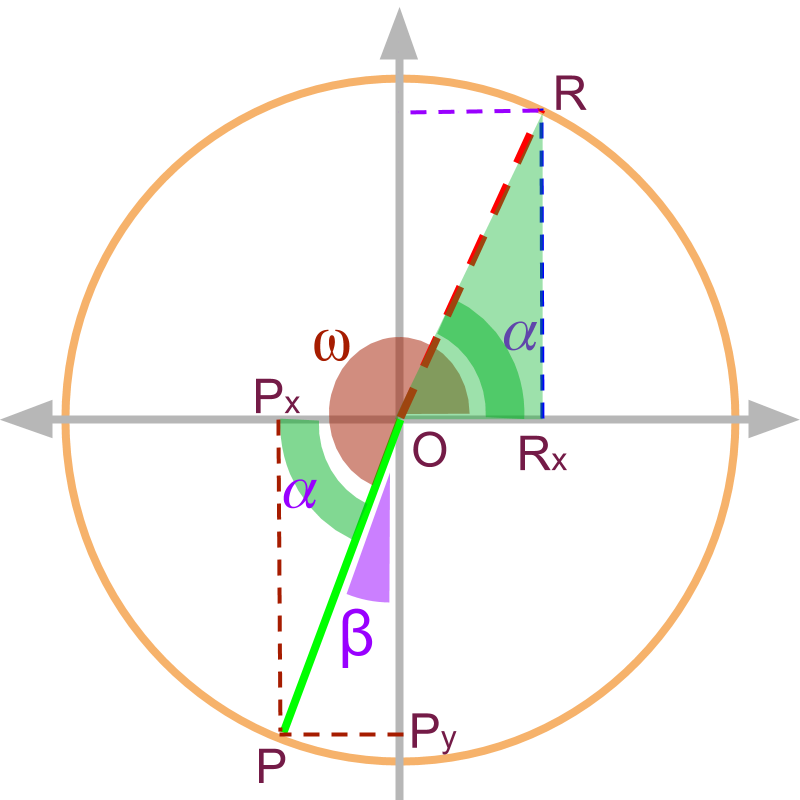
For the , the angle with x-axis is used to construct the similar triangle in the 1st quadrant.
The sign of the trigonometric ratio is derived from the signs of and .
The trigonometric ratios are
•
•
•
first form: angle with y-axis
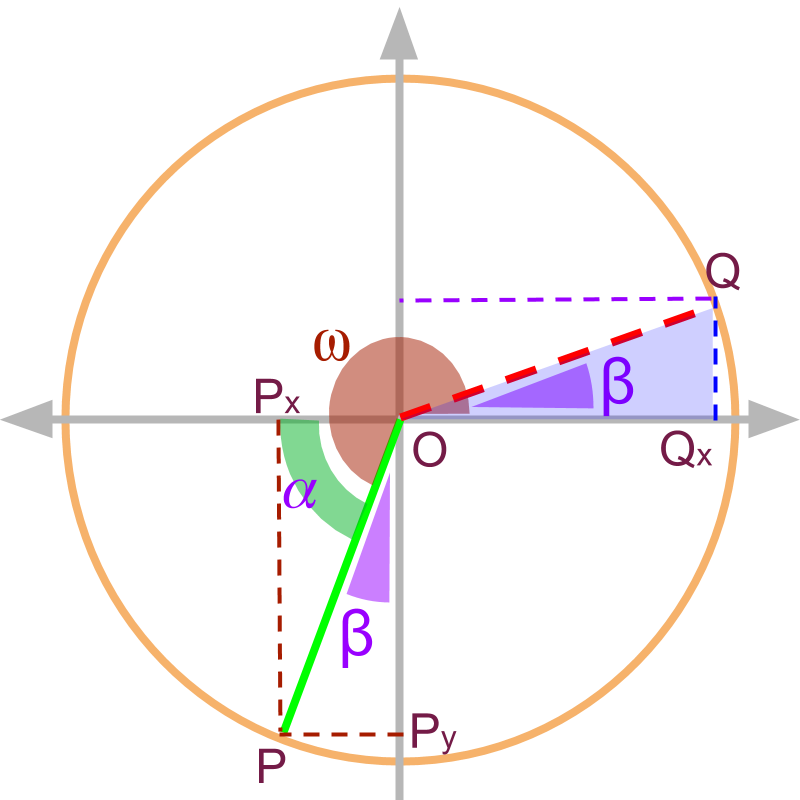
For the , the angle with y-axis is used to construct the similar triangle in the 1st quadrant.
The sign of the trigonometric ratio is derived from the signs of and .
The trigonometric ratios are
•
•
•
remember
The trigonometric ratios of can equivalently be represented with one of the complementary angles and in 1st quadrant. Where is the angle with -axis and is the angle with -axis.
The sign of the trigonometric ratios are to be derived from the original quadrant of
The maps to equivalent trigonometric ratios as the x and y projections are retained in x and y axes.
The maps to complementary trigonometric ratios as the x and y projections are swapped in 1st quadrant.
summary

Equivalent Ratio in 1st Quadrant: Any angle is equivalently considered with either of
• angle made with x-axis
• angle made with y-axis
The equivalent trigonometric value is given in first quadrant.
The trigonometric ratios are
•
•
•
Outline
It is advised to do the firmfunda version of "basics of Trigonometry" course before doing this.
The outline of material to learn "Advanced Trigonometry" is as follows.
Note: go to detailed outline of Advanced Trigonometry
→ Unit Circle form of Trigonmetric Values
→ Trigonometric Values in all Quadrants
→ Trigonometric Values or any Angles : First Principles
→ Understanding Trigonometric Values in First Quadrant
→ Trigonometric Values in First Quadrant
→ Trigonometric Values of Compound Angles: Geometrical Proof
→ Trigonometric Values of Compound Angles: Algebraic Proof
→ Trigonometric Values of Compound Angles: tan cot
→ Trigonometric Values of Compound Angles: more results